SpaceX's Starship 4th flight test looks epic in these stunning photos

SpaceX launched its massive Starship vehicle on a fourth flight test today (June 6), once again leading to some breathtaking photography.
Starship consists of a first-stage booster rocket known as Super Heavy and the upper-stage spacecraft known as Starship (sometimes referred to as "Ship"). Together, the pair makes up the largest and most powerful rocket ever built by humans.
On this fourth flight test, Starship took off once more from SpaceX's Starbase facility along the shores of south Texas at at 8:50 a.m. EDT (1250 GMT) on Thursday (June 6). The vehicle made it through booster separation before Super Heavy made a successful soft "landing," splashing down in the Gulf of Mexico. After a fiery reentry, Starship made a successful landing burn before making its own splashdown in the Indian Ocean.
As with previous Starship flight tests, scores of cameras were pointed at SpaceX's megarocket to capture the spectacle. SpaceX posted a picture of Starship just before liftoff, with the early morning sun rising above the massive rocket.
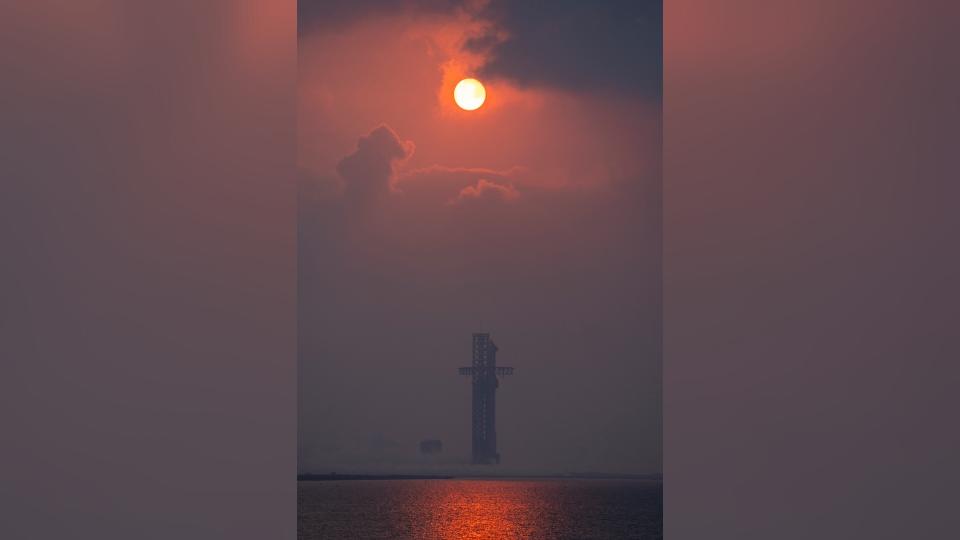
The sheer power of Super Heavy's 33 Raptor engines can be seen in SpaceX's drone shot below.
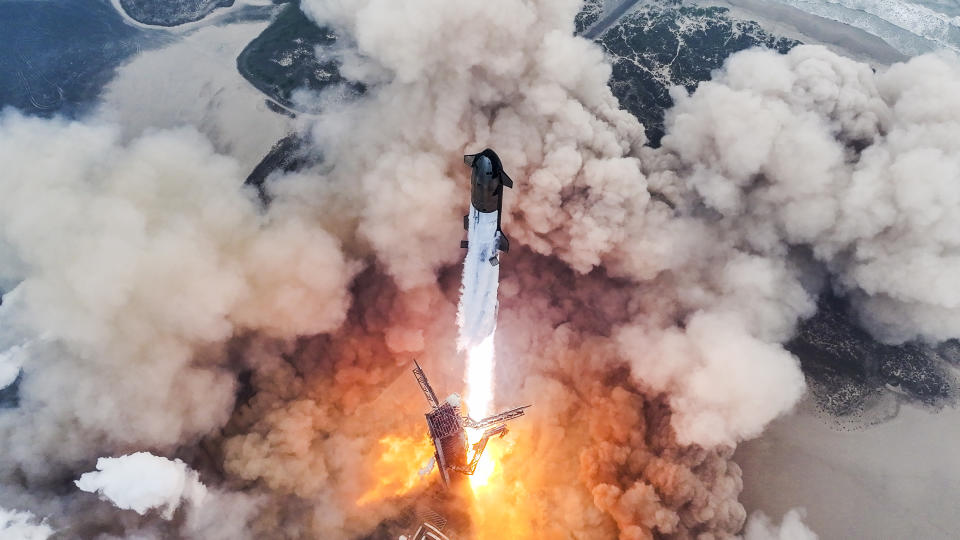
While clouds and haze blocked many cameras, SpaceX was able to capture the following shot of Starship rocketing past the early morning sun.
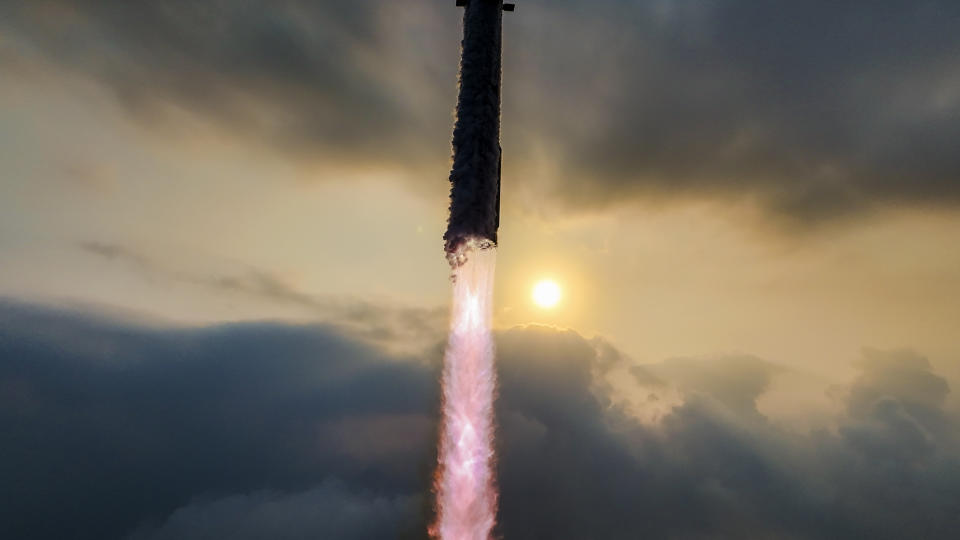
The scale of the 400-foot-tall (122-meter-tall) Starship vehicle can be seen in this photo from SpaceX.
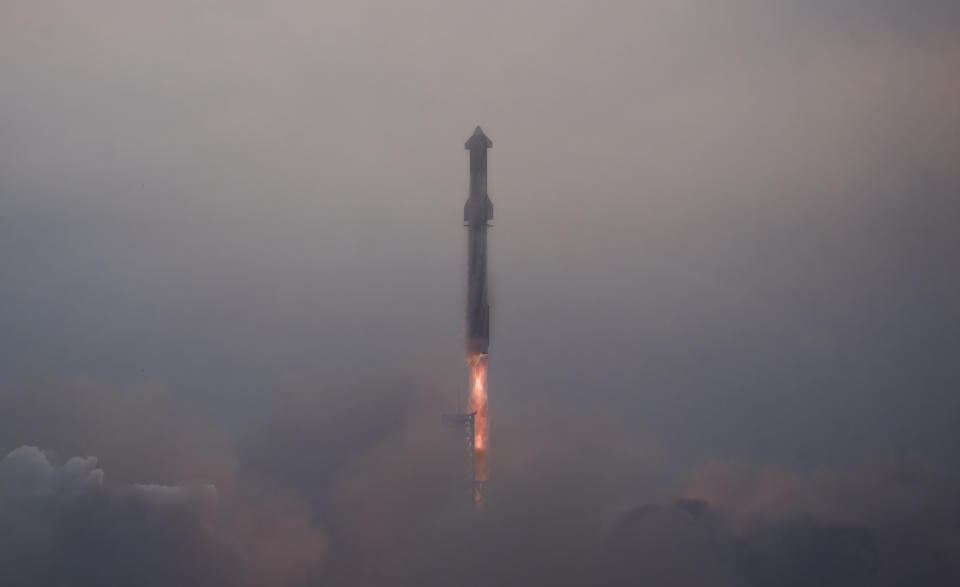
Photographer Chandan Khanna caught this fiery image of Super Heavy's Raptor engines igniting at liftoff.

Despite the haze, Starship made for an impressive sight when it cleared the launch pad.
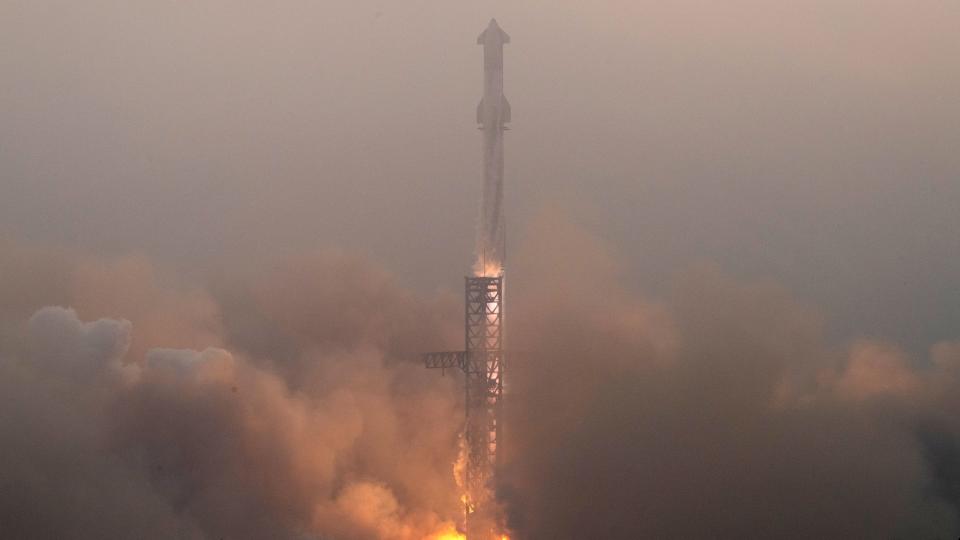
Astrophotographer Andrew McCarthy caught a breathtaking shot of Starship as it made its way toward space, capturing 32 of the vehicle's 33 Raptor engines firing during liftoff. "A glorious ascent. Starship doesn’t disappoint," McCarthy posted on X alongside the photo.
One of the milestones SpaceX achieved on this fourth flight test was a successful splashdown of Starship's Super Heavy booster. In the future, the company plans to catch the rocket using massive "chopstick" arms on the vehicle's launch tower.
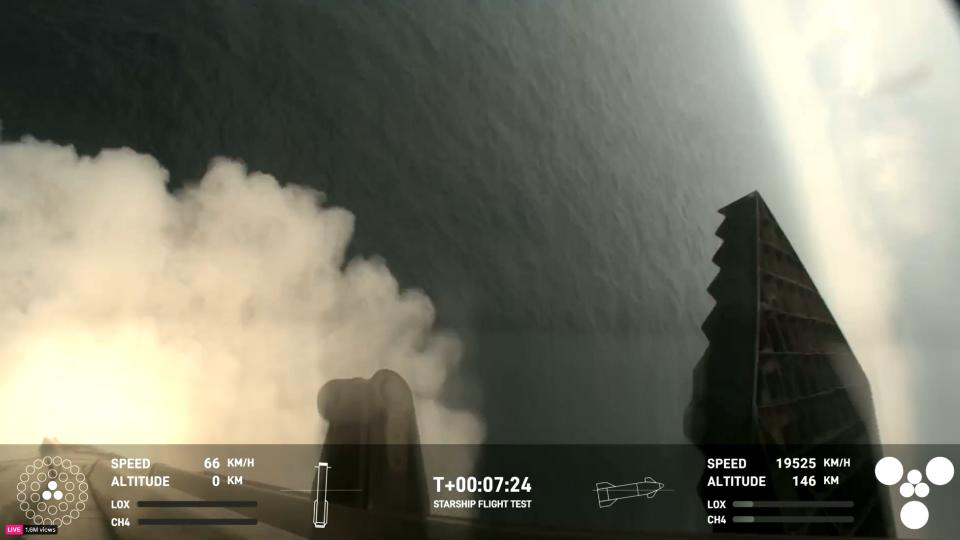
SpaceX provided live views of Starship's reentry through Earth's atmosphere during the flight test as the vehicle was sheathed in plasma.
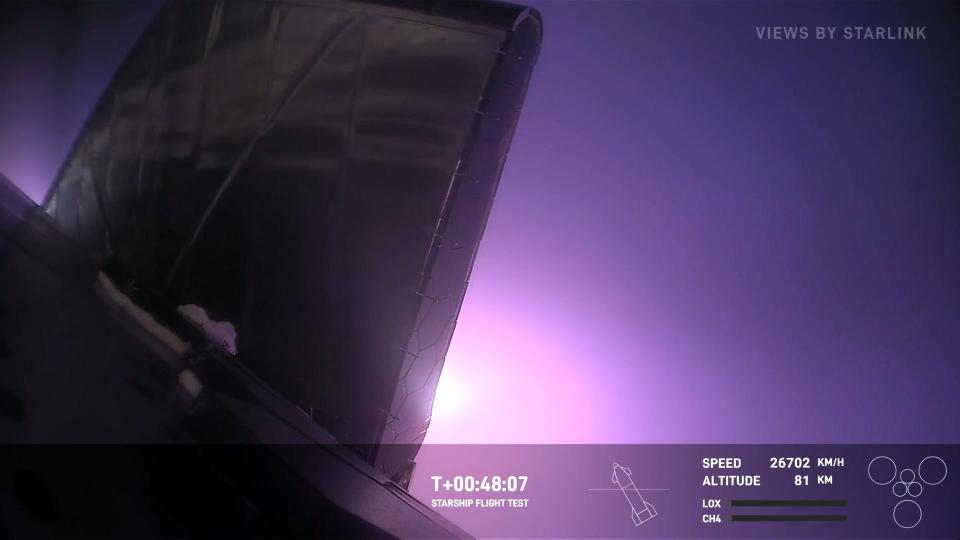
Starship's reentry was a nail-biter, as pieces of the vehicle could be seen burning away as the spacecraft made its way through Earth's atmosphere. Despite the visible damage Starship suffered, it was able to perform a landing burn above the Indian Ocean northwest of Australia.
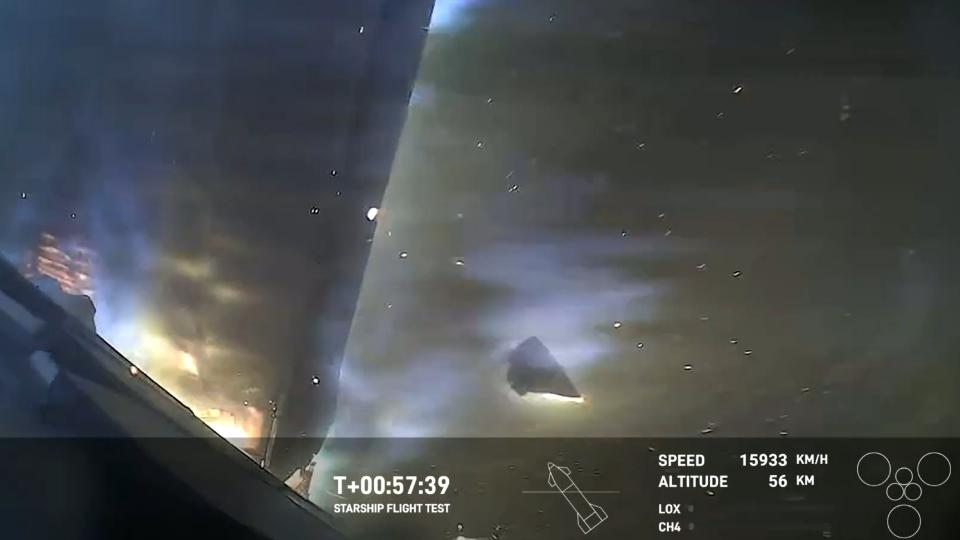
RELATED STORIES:
— How SpaceX's private Polaris Dawn astronauts will attempt the 1st-ever 'all-civilian' spacewalk
— SpaceX fires up Starship rocket for upcoming 5th test flight (photos, video)
While neither Super Heavy nor Starship were recovered during this test flight, SpaceX commentators during the launch coverage stressed that the "data was the payload" for this mission, meaning the data the company receives from the flight will help in the further development of the Starship vehicle as the company aims further test flights this year.
Now that Starship has (mostly) survived reentry, SpaceX will work towards catching the Super Heavy booster with the massive chopstick arms on its launch tower following reentry on the next test launch. "I think we should try to catch the booster with the mechazilla arms next flight!, SpaceX CEO Elon Musk posted on X following the test flight.
